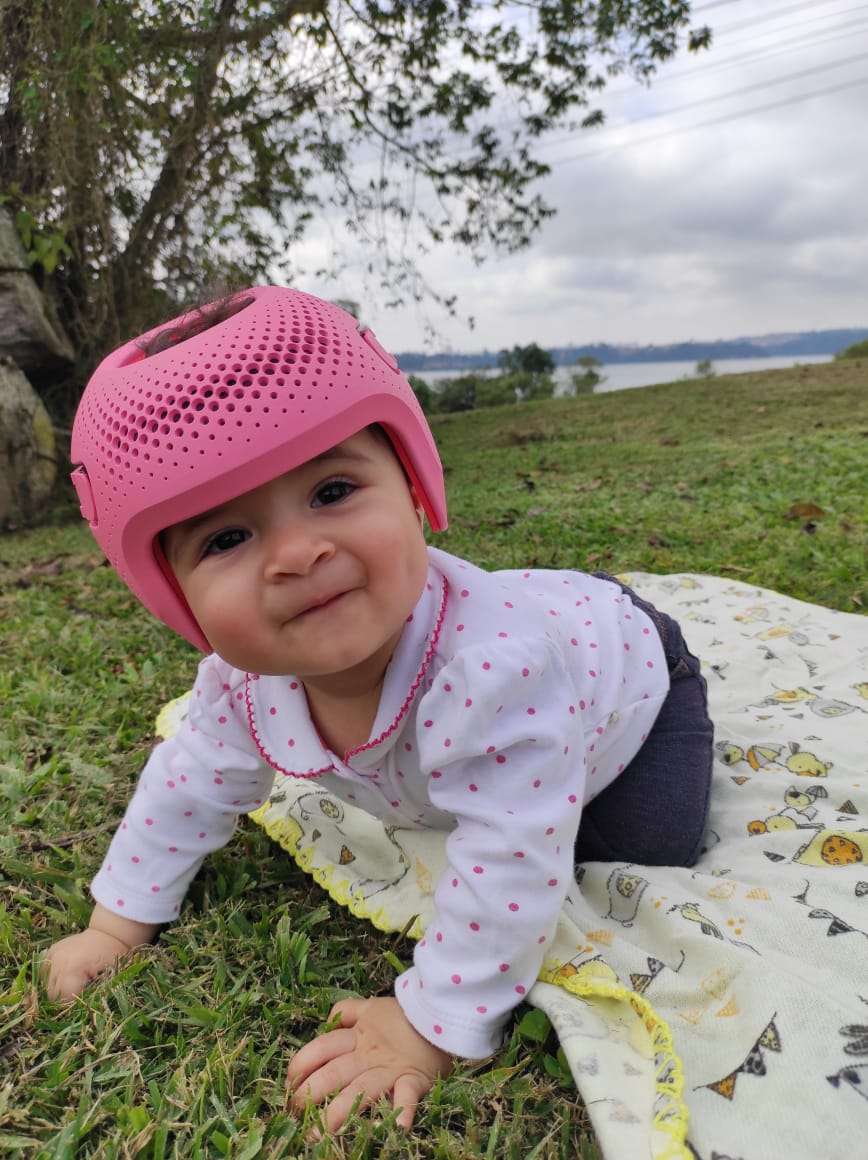Rebound O&P
Updated 1:27 PM CDT, Tue October 8, 2024
Published Under: Cranial Helmets Orthotics

Cranial Helmets for Babies: What Parents Need to Know
As a parent, your child's health and development are always top of mind. If you've recently heard about cranial helmets for babies, you might have questions. What are they? When are they used? And how do they work? In this blog, we'll break down everything you need to know about cranial helmets, helping you make informed decisions about your little one’s care.
What Are Cranial Helmets?
Cranial helmets, or cranial orthoses, are custom-fitted devices designed to help correct skull deformities in infants. These deformities can occur due to several reasons, including:
- Positional plagiocephaly: This condition often results from a baby spending too much time on their back or in one position, leading to a flat spot on the head.
- Brachycephaly: Characterized by a wider and flatter skull, usually caused by similar positioning issues.
- Scaphocephaly: This condition leads to an elongated head shape, which can occur due to early fusion of skull sutures.
Cranial helmets help guide the growth of the skull into a more typical shape by providing gentle pressure to certain areas while allowing room for growth in others.
When Are Cranial Helmets Recommended?
Typically, cranial helmets are recommended for babies between 3 and 18 months old, as this is the period when the skull is most malleable. The sooner a helmet is fitted, the better the outcomes tend to be. A pediatrician or a specialist, such as a pediatric neurosurgeon, pediatric physical therapist, or orthotist, will assess your baby’s head shape and determine if a helmet is necessary.
The Fitting Process
Getting a cranial helmet involves several steps:
1. Assessment: The specialist will evaluate your baby’s head shape and determine the severity of the condition.
2. Custom Molding: A custom mold is created, often using 3D imaging or traditional casting techniques, to ensure a perfect fit.
3. Fitting the Helmet: Once the helmet is ready, your baby will wear it for the prescribed duration, usually 23 hours a day.
How Do Cranial Helmets Work?
Cranial helmets work by applying gentle pressure to specific areas of the skull, allowing the flat spots to round out while preventing further flattening. The design is intentional; it creates a snug fit while leaving some areas open to promote growth. This gentle correction helps the skull develop in a more symmetrical manner.
Caring for Your Baby While They Wear a Helmet
Caring for a baby in a cranial helmet can be a unique experience. Here are some tips to help you navigate this period:
- Keep It clean: Helmets can get sweaty, so regular cleaning is essential. Follow your orthotist's instructions for cleaning the helmet.
- Skin care: Monitor your baby's scalp for any irritation. If you notice any redness or soreness, consult your healthcare provider.
- Adjusting to the helmet: Some babies may take time to adjust. Offer comfort and distractions, like toys or songs, to help them acclimate.
Common Concerns and Misconceptions
1. Will my baby need to wear It forever?: No! Most babies wear helmets for about 3 to 6 months, depending on their individual needs.
2. Is it uncomfortable?: While it may take some getting used to, most babies adapt well. They can still engage in normal activities.
3. Can helmets fix everything?: Cranial helmets are effective for specific conditions. For more severe skull deformities, additional treatments may be necessary.
Conclusion
Cranial helmets can be an effective solution for babies with certain skull shape issues. If you suspect your baby may benefit from a cranial helmet, consult your pediatrician for an evaluation. Remember, each child’s situation is unique, and early intervention often leads to the best outcomes. With the right support and care, your baby can enjoy a healthy, happy journey as they grow and develop.
If you have further questions or need support, don’t hesitate to reach out to other parents, healthcare professionals, or support groups. You’re not alone on this journey!

Comments